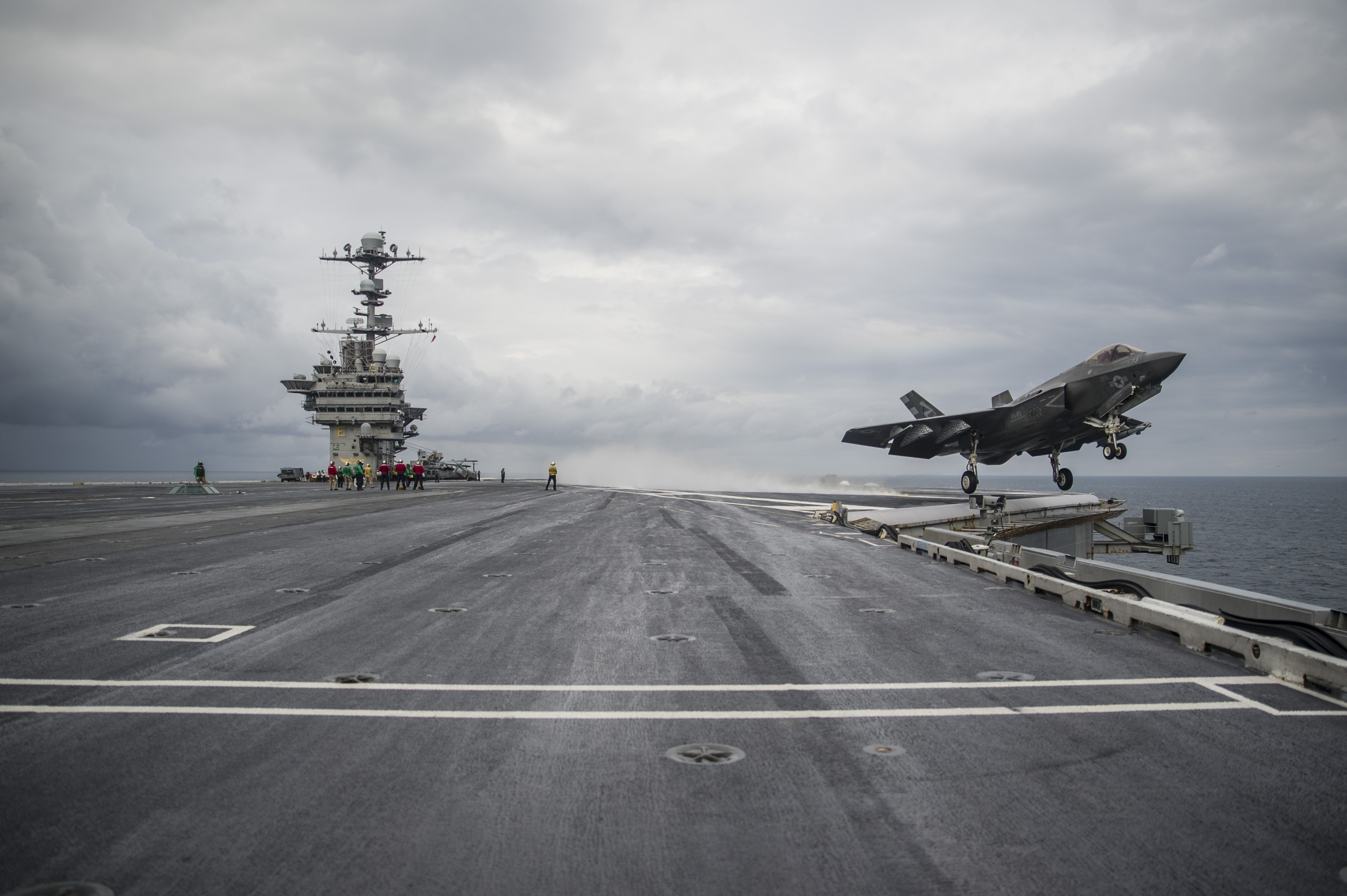
WASHINGTON, D.C. – The Navy has completed testing on potential solutions to solve a ‘must fix’ catapult launch problem on the carrier version of the Lockheed Martin F-35 Lighting II Joint Strike Fighter, the head of the JSF joint program office said on Wednesday.
Now the service and the JPO are set to test the fixes during the next set of underway carrier trials for the fighter in the fall, Air Force Lt. Gen. Christopher Bogdon said during the McAleese/Credit Suisse defense conference.
During F-35C testing on USS George Washington (CVN-73) late last year, pilots were buffeted in the cockpit when after launch the fighter would excessively bob up and down on the nose gear as the JSF was catapulted down the flight deck.
“This is a very stiff airplane, even though the oscillations about the same magnitude as you would see in a Super Hornet, it beats the pilot up pretty good,” Bogdan said.
“He’s hurting after doing three or four of these [launches] and in some instances even banging his half-a-million dollar helmet on the canopy. That’s not good for the canopy or the helmet. So we knew we had an issue there.”
According to a December Pentagon’s director, Operational Test & Evaluation report,
“fleet pilots reported that the oscillations were so severe that they could not read flight critical data, an unacceptable and unsafe situation during a critical phase of flight. Most of the pilots locked their harness during the catapult shot which made emergency switches hard to reach, again creating, in their opinion, an unacceptable and unsafe situation.”
The report said the Navy had told the JPO the problem was a “must fix,” deficiency.
In an evaluation of the pilot discomfort following 105 test launches on George Washington (CVN-73), 74 resulted in moderate pain, 18 caused severe pain, reported Inside the Navy in December.
In February, Bogdon told Congress the Navy would test potential fixes at Joint Base McGuire-Dix-Lakehurst, N.J. at the Navy’s land-based test catapults.
“What we wanted to try and figure out was do we need a complete redesign of the nose gear or can we do other things? Well, the testing at Lakehurst has shown us that there are a couple of things we can do to mitigate this problem,” Bogdon said.
Those were changes on securing the pilot in the cockpit and adjusting the tension of the pull back bar on the catapult that compresses the strut of the nose gear.
“We were pulling that down to the max load of the airplane, not recognizing that was causing the biggest oscillations and you can actually launch this thing at low weight with a lot less tension on that catapult bar,” Bogdon said.
“We’ve proven that out. Whether that reduces that enough, I don’t know. We have to take that out to the field and check it out. If [it doesn’t work] we have to take it back to the drawing board and structurally look at what else we need to do.”
The Navy and the JPO will tests the fixes at sea later this year. If they don’t work the Pentagon and Lockheed may have to begin an estimated years-long effort to redesign the nose gear.





